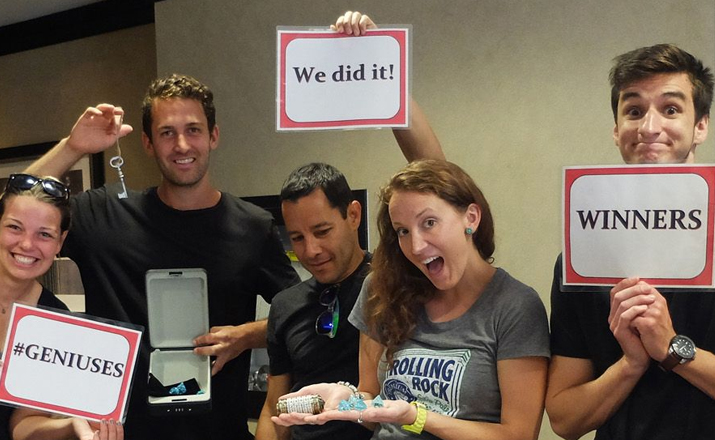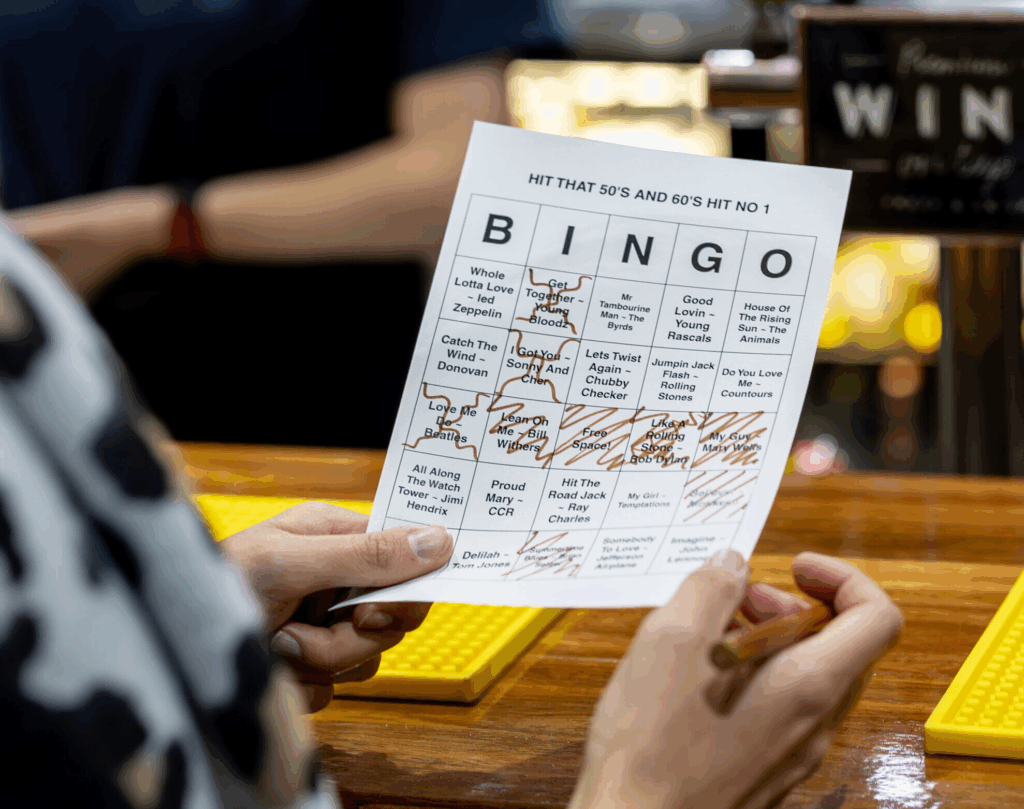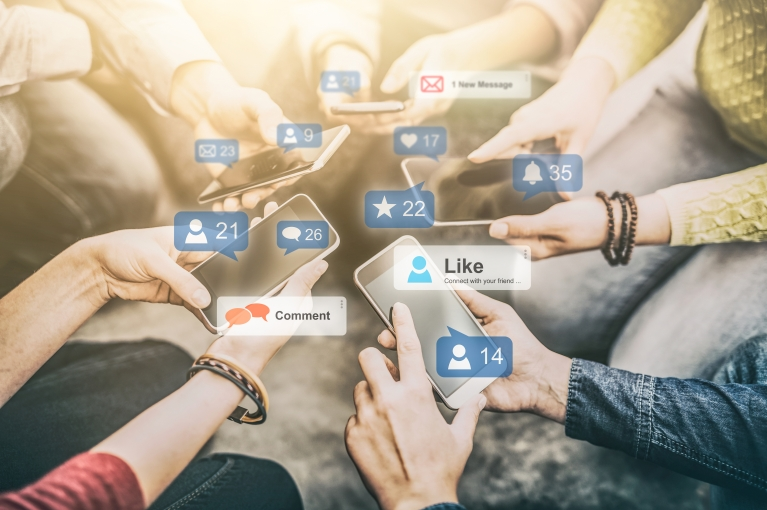Corporate events can tend to blend together – people sitting through endless presentations, networking during breaks and visiting just a few exhibitor booths. Despite the worthiness of these activities, what a lot of event planners really find difficult is keeping participants in the game from beginning to end. This is where gamification plays its role. Comparing, competing and winning can make attendees value your conference or meeting more than the next trade show and keep them coming back for more.
In this post, we will delve into how gamification operates and why it works and and provide some ways you could incorporate it into your own corporate event.
What Exactly Is Gamification In Corporate Events?
Gamification is the application of game-like features in non-gaming set-ups. This might be through gaining points, finishing challenges, climbing up the leaderboards, or working for rewards. At corporate events, gamification isn’t about making everything a video game—instead, this technique to turn an experience more interactive, motivating and just plain fun.
Think of it as gamifying event goals: rather than simply directing your attendees to booth visits, you inspire them to earn points for every booth they visit. Rather than sit and listen passively in session, you’re bringing in a live quiz with immediate prizes.
The concept is simple: When people are having fun, they become more engaged.
Why Gamification Works for Corporate Events
Gamification is effective because it leverages human psychology. People love getting recognition and rewards for accomplishing tasks. At events, it serves several purposes:
- Increases participation – More people will participate in sessions, booths and networking when there’s an element of fun challenge to it.
- Promotes networking —When you play a game it becomes an ice-breaker and a reason for individuals to connect with someone they don’t know.
- Easier Knowledge Absorption – Interactivity increases what participants remember from what they hear.
- Inspires through competition – a leaderboard, prize can ignite some friendly competition and hype.
- Gives useful information – Organizers can measure engagement, involvement, and behavior of attendants using gamified apps.
In other words, gamification isn’t simply a play thing— it’s a means to better reaching your event objectives.
How To Apply Gamification At Your Corporate Events
There are a lot of fun ways to add gamification to your event, regardless of whether it’s a small or large event. Here are some of the best ones:
Event Apps With Challenges
A lot of corporate events are using mobile apps, so you’ll find gamification much easier to manage. In the app, you choose to challenge:
- Attend three breakout sessions.
- Visit five exhibitor booths.
- Share feedback on a presentation.
- Connect with five new people.
As participants check these off their lists, they rack up points, which are reflected on a live leaderboard, which allows for some friendly competition during your program.
Interactive Quizzes and Polls
Rather than just showing information, make them interactive. Use tools like Slido, Kahoot!, or Mentimeter to conduct live quizzes and polls. These serve to keep audiences engaged, and also to allow the speaker to gauge comprehension. You can keep the energy high by calling out the high scorers each round and giving them small prizes or public shoutouts.
Scavenger Hunts and AR Games
Are you looking to get everyone up on their feet and around the venue? Using QR codes, photo challenges, or other elements such as augmented reality (AR), players gather clues and accomplish tasks. For sponsors and exhibitors, this will give the added bonus of much more traffic to their booth and longer, in-depth conversations.
Networking Bingo
Network-building is a typical goal of corporate events, but many people find it awkward. Networking bingo can solve this issue by providing attendees with a bingo card that has prompts like:
- “Find someone from another department.”
- “Introduce us to someone who has gone overseas for work.”
- “Talk to someone in the company who has been there more than 10 years.
When the users fill in a row or the whole card, they can redeem their gifts. It encourages people to speak with strangers and form real connections.
Social Media Challenges
Promote the event online by putting up social media challenges for attendees. For example:
- Take a photo at the event with the hashtag.
- Tell us about a session takeaway.
- Tag the event sponsor with an original post.
The most compelling of these can be shown on large screens in the venue, engaging and rewarding originality as the day progresses.
Team-Based Competitions
Team challenges, which might include trivia head-to-heads, escape rooms and group logic puzzles, promote teamwork and foster team spirit. These are ideal for company-wide events when team-building is important.
Reward System
Rewards are an essential element of gamification. These needn’t always be expensive — sometimes, it is the recognition and visibility that provide the greatest strength and reward rather than material prizes. Effective reward ideas include:
- Gift cards or branded merchandise.
- Experience-based prizes like event tickets.
- Certificates of achievement.
- Public recognition during closing ceremonies.
Tips for Successful Gamification
To ensure gamification is going to be effective, these best practices come in handy:
- Keep simple – Complicated rules can put people off.
- Compliment event objectives – Ensure the challenges support networking, learning or sponsor engagement.
- Find a balance between fun and professionalism – Your gamification should be entertaining but it should not distract from the event itself.
- Track participation — Employ apps and digital tools to track data on what was most effective.
- Highlight winners – Sharing the results builds excitement and motivates others to join the next time.
Real-Life Example
At one recent tech conference, the organizers added a scavenger hunt that uses an app. Those in attendance could earn points for scanning QR codes at exhibitor booths, asking questions during presentations and posting about the conference on LinkedIn. The results were impressive:
- That’s a 40% increase in booth encounters.
- More engaged audiences during sessions.
- A vibrant online chatter that expanded the event’s reach.
And that’s how gamification can directly drive engagement and be successful for both the attendees and the organizers.
Conclusion
It’s the fact that gamification is more than just a fad — it is a strategy that has been proven to transform passive audience members into active players. By adding challenges, rewards, and a bit of friendly competition, corporate events will no longer be just informative, they’ll be a great deal of fun, and also memorable. By using event apps, quizzes, scavenger hunts, and networking games, gamification promotes interaction, builds connections, and furthers organizers’ goals.
If you’re looking for ways to help your next corporate event to shine, you might consider gamification. It might be the difference between people just turning up at your event and people attending, engaging, connecting and remembering it for weeks after it ends.











